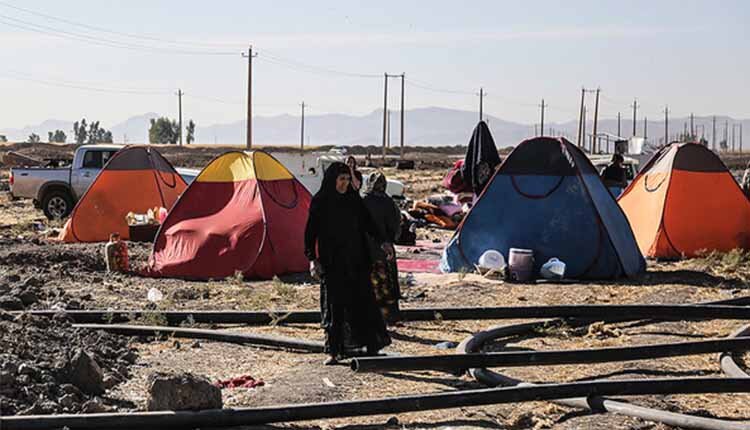Eleven months after the devastating earthquake in November 2017, 30% of tenants in the quake-stricken areas continue to live on the streets, the mayor of Sarpol-e Zahab in Iran’s western province of Kermanshah admitted.
In regard to the current situation of those who were left homeless by the earthquake, Mohammad Jamali nia said, “Only the floor concrete placement takes 28 days. Therefore, with a thumbnail account, it can be seen that the repair of all houses will take a lot of time.”
It means that hundreds of survivors of the devastating earthquake will spend another winter in bitterly cold temperatures in need essential supplies.
The housing situation is so catastrophic that some of the residents are reportedly selling their kidneys in order to rebuild their homes.
In an interview with Iran’s Ilna news agency on September 14, Sarpol-e Zahab’s City Council Chairman accuses Hassan Rouhani’s administration of inaction and considers this the reason why some citizens are selling their kidneys.
He adds: “The mental situation of the citizens is very troubling. Hygiene and sanitation are very inadequate, and the municipality hasn’t yet given us any money to do something. I wish the Ministry of Interior would say what services they’ve provided for a city like Sarpol-e Zahab.”
On September 5, Irna news agency wrote about the housing situation: “Earthquake-stricken [families] with sick or elderly members or little children are more concerned, because if they don’t succeed in building their shelters, they have to spend a second cold winter in makeshift Conex houses and tents, not to mention the grueling summer heat they have to bear right now.”
And while the situation is far from normalized, state agencies are leaving the area one after another.
“On arrival, many of the agencies which came to the area, put up banners in the city saying that they will stand together with the earthquake victims until the end. Unfortunately, many agencies didn’t stay in the area and declared that they want to leave,” says Sarpol-e Zahab’s City Council Chairman.
The 7.3-magnitude earthquake hit Kermanshah on November 12, 2017. It was Iran’s deadliest earthquake in more than a decade. More than 600 people lost their lives in the quake while more than 70,000 were displaced. Several others lost their lives due to the cold weather.
Last year, the daily Qanoon had reported that a 2-year-old girl, Sarina Zahabi, who was living with her family in a tent, lost her life due to the cold weather.
According to Iranian Parliament’s official website, MP Shehab Naderi had said, “In addition to Sarina Zahabi, several other children, including an eight-month-old baby, have died of fever and frostbite.”











